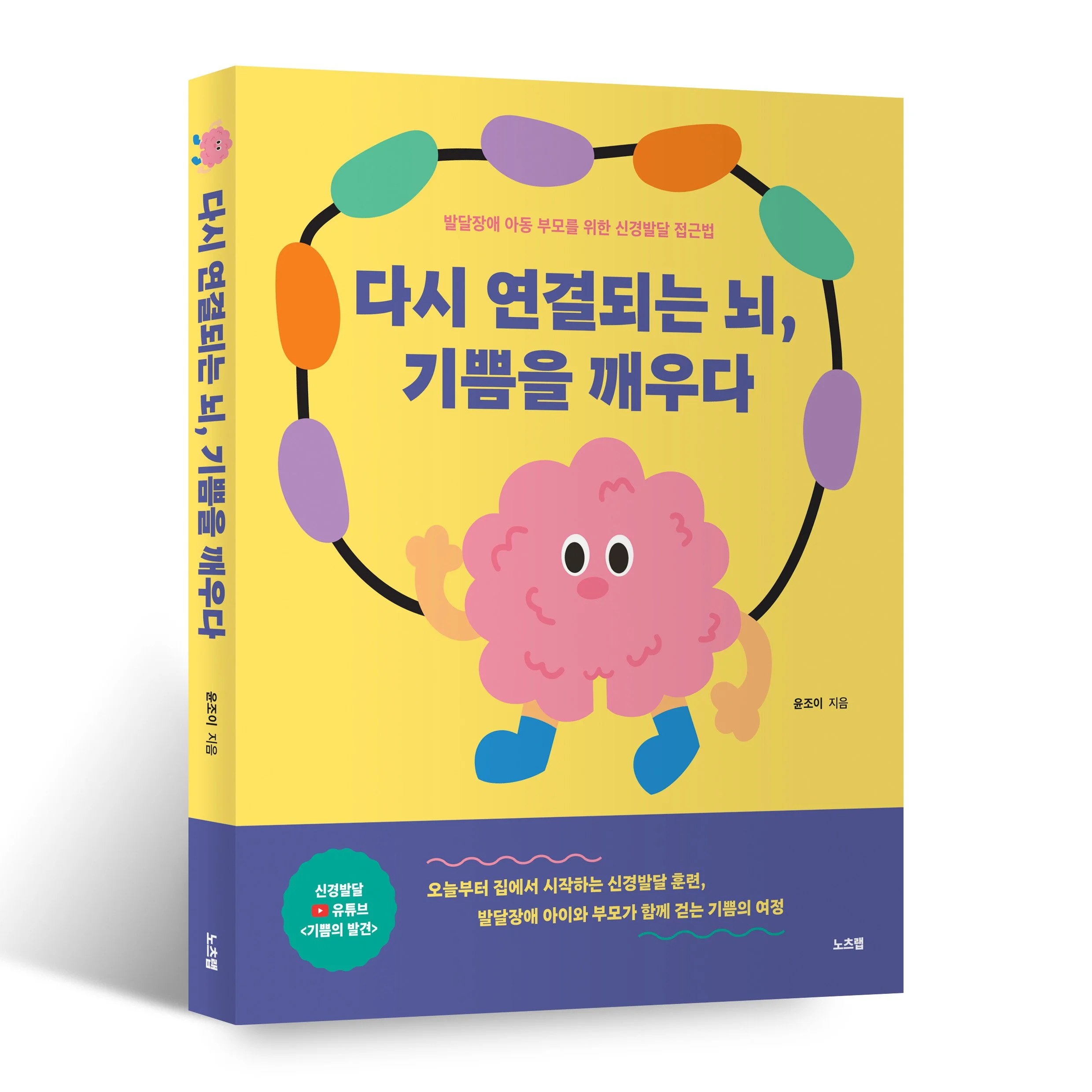Awakening the Brain, Reviving Joy
After a four-year journey, the official manual for the Neurodevelopmental Approach has finally been published in Korean. As I look back on everything that has taken place over these years, I am filled with awe and gratitude—it’s hard to believe this day has finally arrived.
From launching the Discovering Joy YouTube channel in 2021, to meeting a few pioneering mothers and translating the first rough draft of this book, to ultimately launching the parent training program Journey Towards Joy, so much has happened in these four years.
YouTube Channel “Discovering Joy”
None of this would have been possible without the dedicated partnership of those pioneering mothers. The first translation and editing process was entirely the fruit of their tireless effort. Thanks to their work, we’ve been able to use that early manual for the past nine parent training sessions. I have learned so much through training alongside these mothers—witnessing the transformation of both parents and children alike. Every mother who helped with the first translation and compilation of this book, as well as those who have continued training with me in Journey Towards Joy, together with all the team leaders and screeners who have organized and implemented the program, have each contributed in invaluable ways.
Our Ignis Community teammates also worked diligently—helping with the Discovering Joy YouTube scripts that later became part of this book. Ignis co-workers assisted with translating the scripts, filming the series, editing the videos, and adding subtitles and images. Above all, my husband, Stephen, played a vital role throughout the process, especially in the final stages of editing the book. He actually spent more time on the script than I did, and for that, I am forever grateful.
Yet this is only the beginning. Thanks to our publishing company, the first manual of its kind is now available in Korean. The Neurodevelopmental Approach can now reach hundreds—perhaps even thousands—of families across East Asia. What began as a program for a small group of families has now become accessible to all Korean speakers. It is our hope that Awakening the Brain, Reviving Joy will bring joy to parents, children, and families throughout East Asia and serve as a tool for restoration and healing in their lives. Already, our teammates are expanding the reach of this work by starting translation from Korean into Japanese and Mongolian.
Neurodevelopmental Approach Manual: Awakening the Brain, Reviving Joy
In a world that often values strength and power, working with families affected by disability calls us to the opposite—to focus on “the least of these.” Our mission is to help children’s brains rebuild neural connections, bridge gaps in development, and restore lost functions. Restoring joy to children and individuals with neurodevelopmental challenges is one small but meaningful part of bringing hope and healing to our broken world.
This book is not merely a manual—it is a map of companionship, guiding parents and children to walk hand in hand. It simplifies complex brain science concepts into practical, easy-to-understand methods, empowering parents to take the lead in daily life. When practiced consistently at home, families will experience not only their child’s growth but also the deepening of the parent-child relationship.
In the words of mothers who have walked this journey:
“Through the Neurodevelopmental Approach, my child has grown remarkably—his sensory challenges have eased, and his ability to listen and memorize numbers has improved. Yet the most profound transformation has been in us, his parents. As we came to understand him more deeply, we began to love him even more.”
Another mother shared:
“As I practiced the Neurodevelopmental Approach at home with my child, the way I saw my child completely changed—it became a turning point in my life. I experienced a truly grateful and amazing time. What I’m most thankful for is that it gave me the opportunity to love my child even more.”
This book helps parents understand their child’s sensory challenges and equips them to respond personally—addressing developmental gaps from the foundational stages upward. It also answers practical questions that often arise during training, organized by each major sensory area, making it both useful and accessible.
It is a wonderful resource not only for children with disabilities but for all children—helping parents fill in the missing pieces of growth that may have been overlooked at different stages. As you meet your child’s eyes, hold their hands, and practice together, remember to hold your child close.
Today, too, may your loving hands support your child’s brain and sensory development. We warmly invite other families with children who have learning challenges or disabilities to join us on this journey of discovering a joy that cannot be replaced by anything else.

